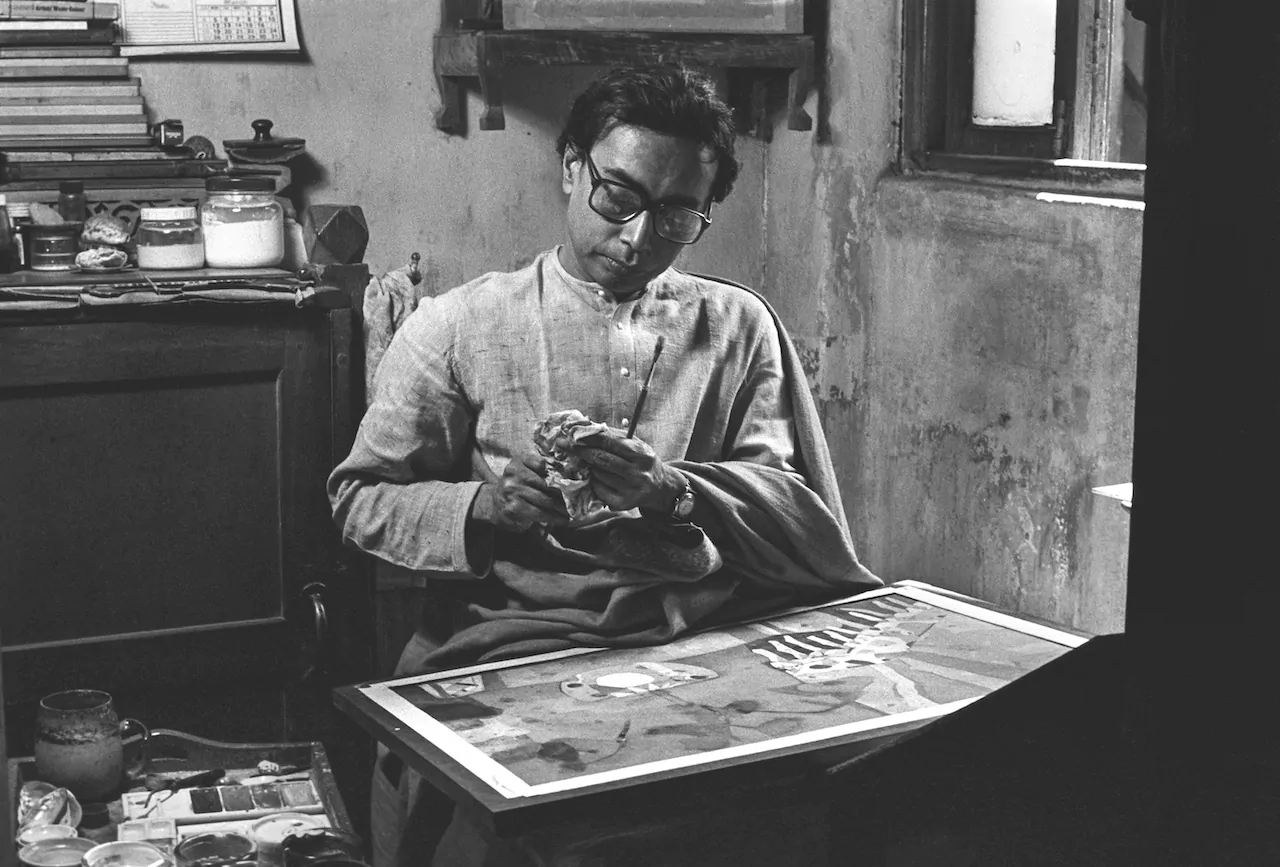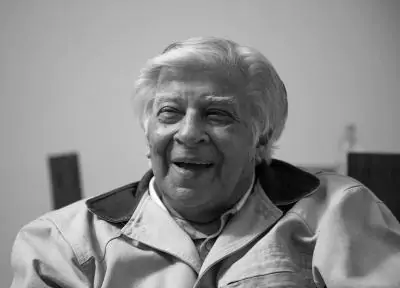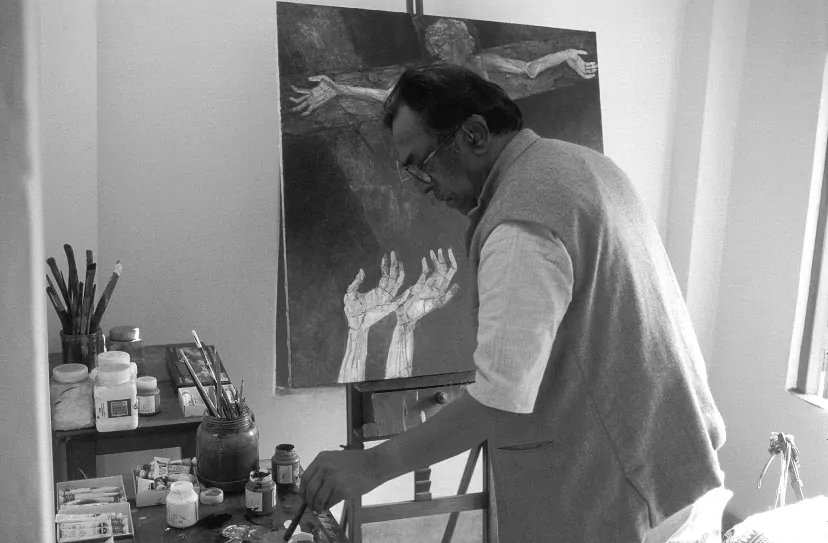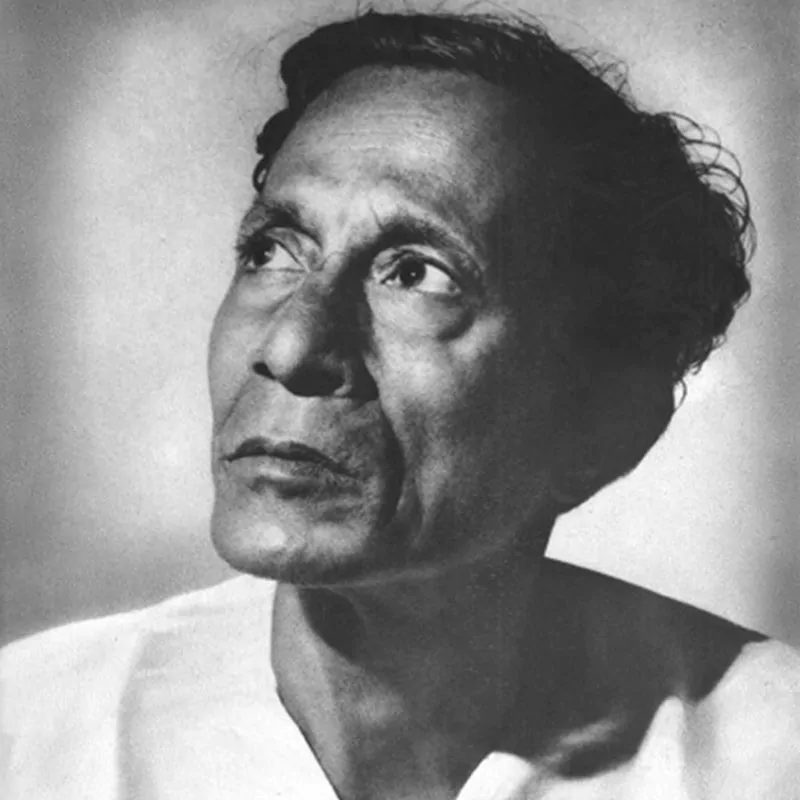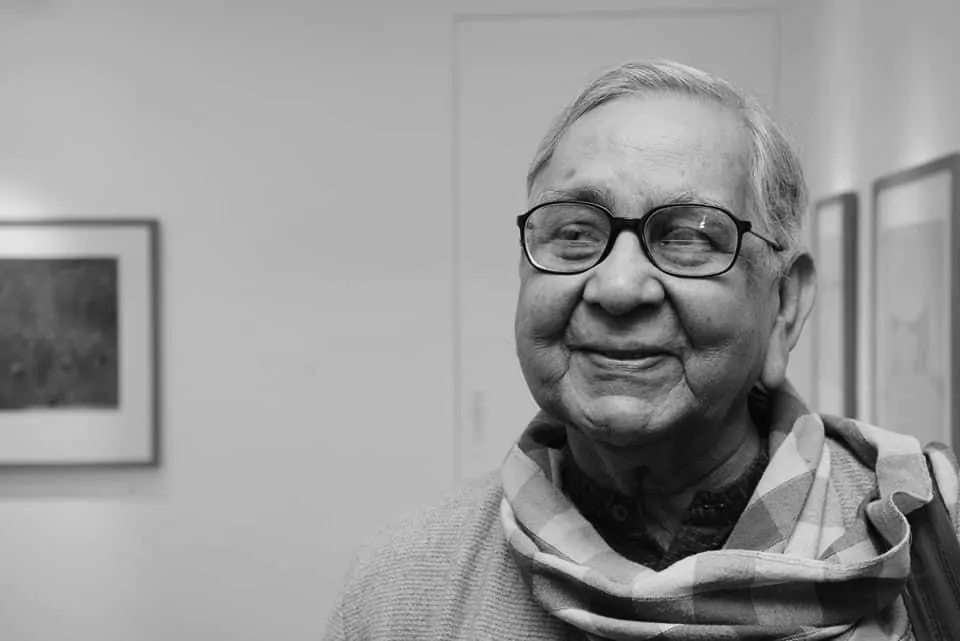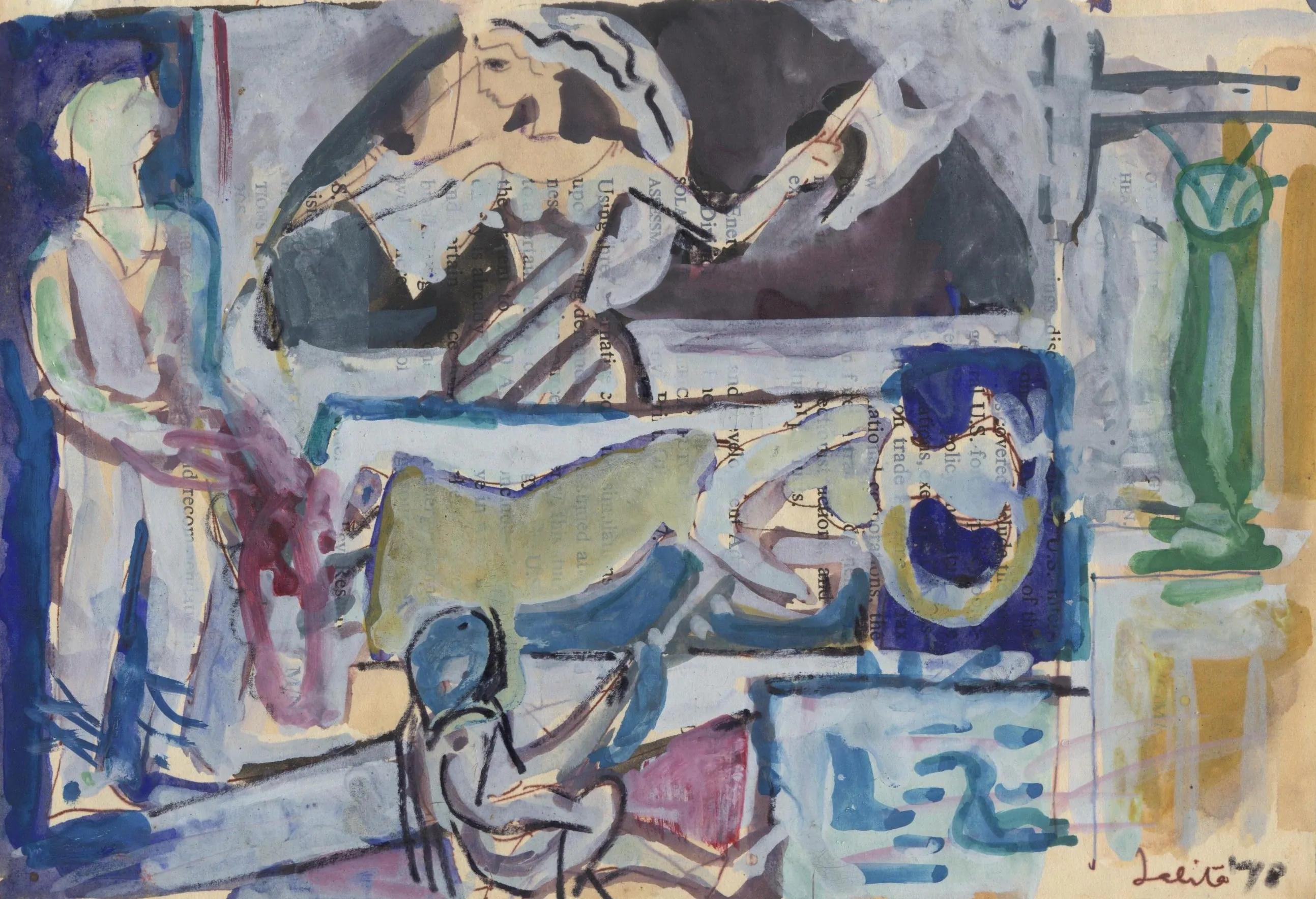Jogen Chowdhury-A Man of All Seasons.
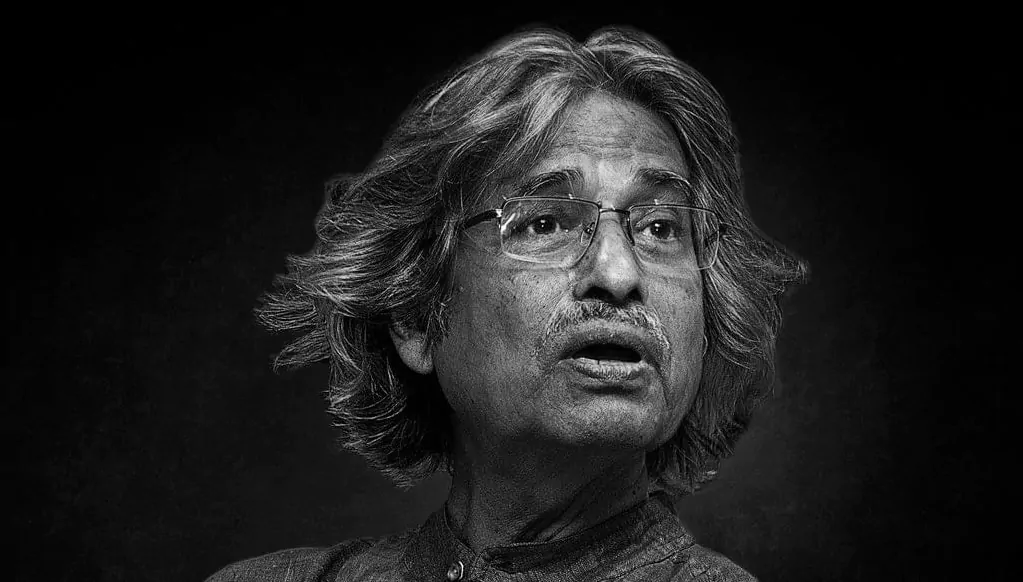
Artist, poet and teacher, Jogen Chowdhury is one of the most significant artists of post-Independence India, renowned for his dramatic treatment of human and derivative forms. The early career of Jogen Chowdhury presents a text-book case of an artist who arrived at primitivism not like Rabindranath Tagore, Jamini Roy or Sunayani Devi-through being unschooled, but by the more arduous process of learning and then un-learning-or moving beyond the whole academic tradition. Born in East Bengal, Faridpur, Jogen Chowdhury migrated with his family to Calcutta during the Partition and studied at the Government College of Art and Crafts, Kolkata from 1955-1960. At the art college it was a time of being drilled into the British Academic methods. Much later Chowdhury expressed his reservations-
“The problem with the art college on Kolkata is that art teaching begins with the conventional modules of life study, still-life composition and so on, with no scope for the art student to reach out to a level of thinking that can raise him to a higher plane of creativity.”
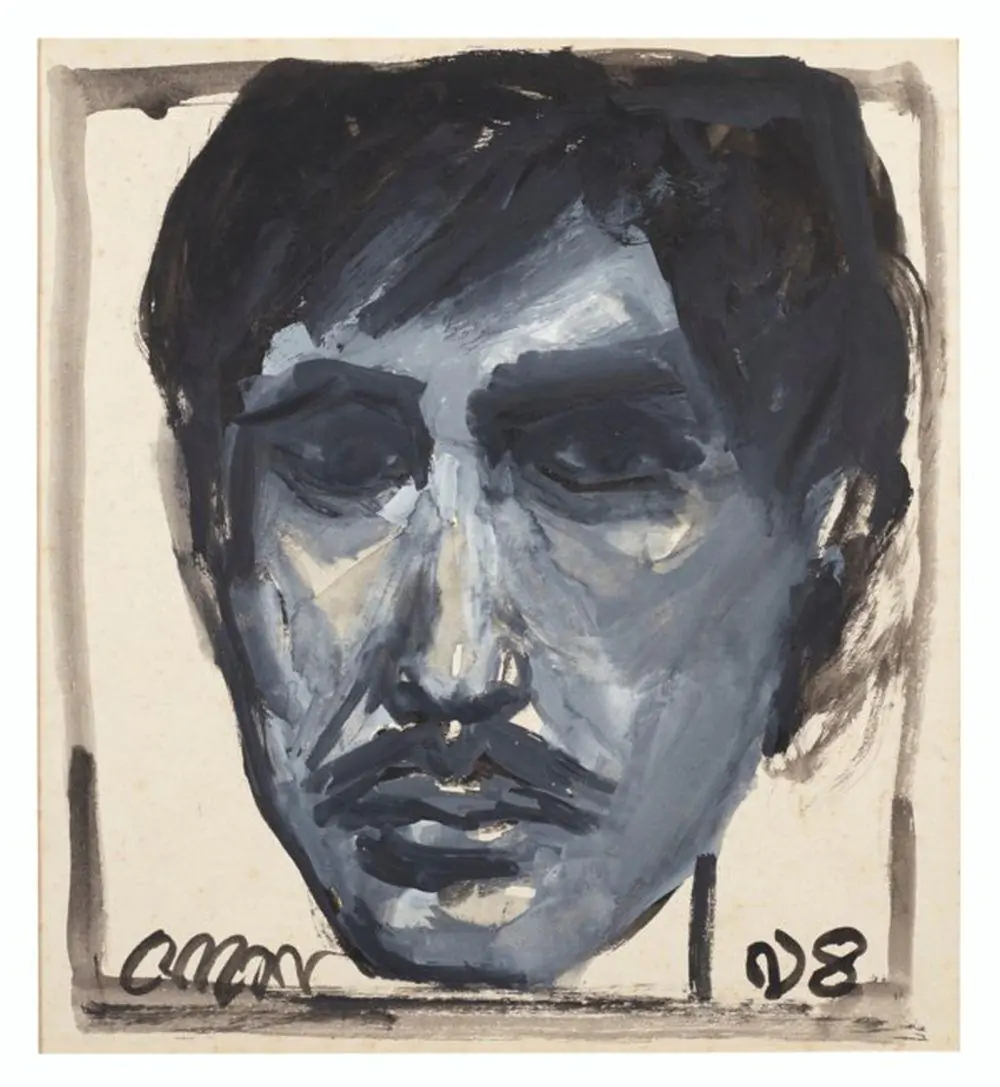
Five years later, a French Government Scholarship provided him with a second dose of academic training by enabling him to travel to Paris to study at the Ecole des Beaux-Arts. He doubted that the trip to France was constructive, thinking that it seemed to impede more than promote his natural development. Certainly, he emerged from his training as an accomplished draughtsman, able to depict the nude model in a naturalistic manner, with little sign of his personal, idiosyncratic vision. Yet at the same time, Jogen Chowdhury himself has insisted on the need to gain exposure to different traditions in an urban context to develop an independent artistic personality. The boy in the village, cut off from urban life, cannot develop his talent as an artist.
The bodies drawn by him are doodled into existence with almost indolent casualness. Disproportion is the essence of Jogen’s bodies, the sign of their naturalness. One has to agree, but also to note that they are not the doodles of the unschooled, that the disproportion does not arise from a lack of perception or an incapacity to draw. Far removed as the results may be from the drawing made in life class, the academic training was still a part of the process. Chowdhury himself distinguishes three different levels or aspects of form: ‘real form (realistic, naturalistic form), charged with the inner expression of one’s self (expressionistic form) and abstract ideas or form (abstraction).’
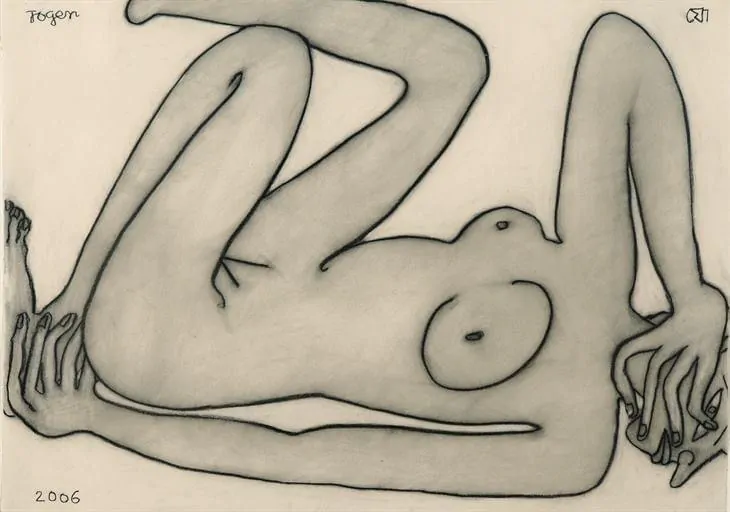
Having departed from the norms of academic training at an early stage of his career, Chowdhury developed a style of cross-hatching with which he created his amorphous looking human, animal and other forms. His works are devoid of specificities of time and place, implicitly recalling the trauma of dislocation and the loss of a home that he experienced as a boy. Static and distorted, his dream-like exaggerations are charged with narratives of domesticity, eroticism and psychological realities, while revealing a distinctly primordial quality.
“There is a certain power in the stillness of an object. Stillness is a form of speed while not in force. It is a stillness that can create greater tension in a work of art,” says the artist.
An internationally acclaimed artist, Chowdhury has participated in art camps and workshops in India and overseas. In 1957, he was part of a major group show at New Delhi’s Lalit Kala Akademi, which ran until 1980. His first solo show was in 1963 when his drawings and paintings were exhibited at Calcutta’s Academy of Fine Arts. He has since then, exhibited in several international exhibitions in Washington D.C., Oxford, Tokyo, including shows at London’s Royal Academy of Art and the Havana and Sao Paolo Biennales.
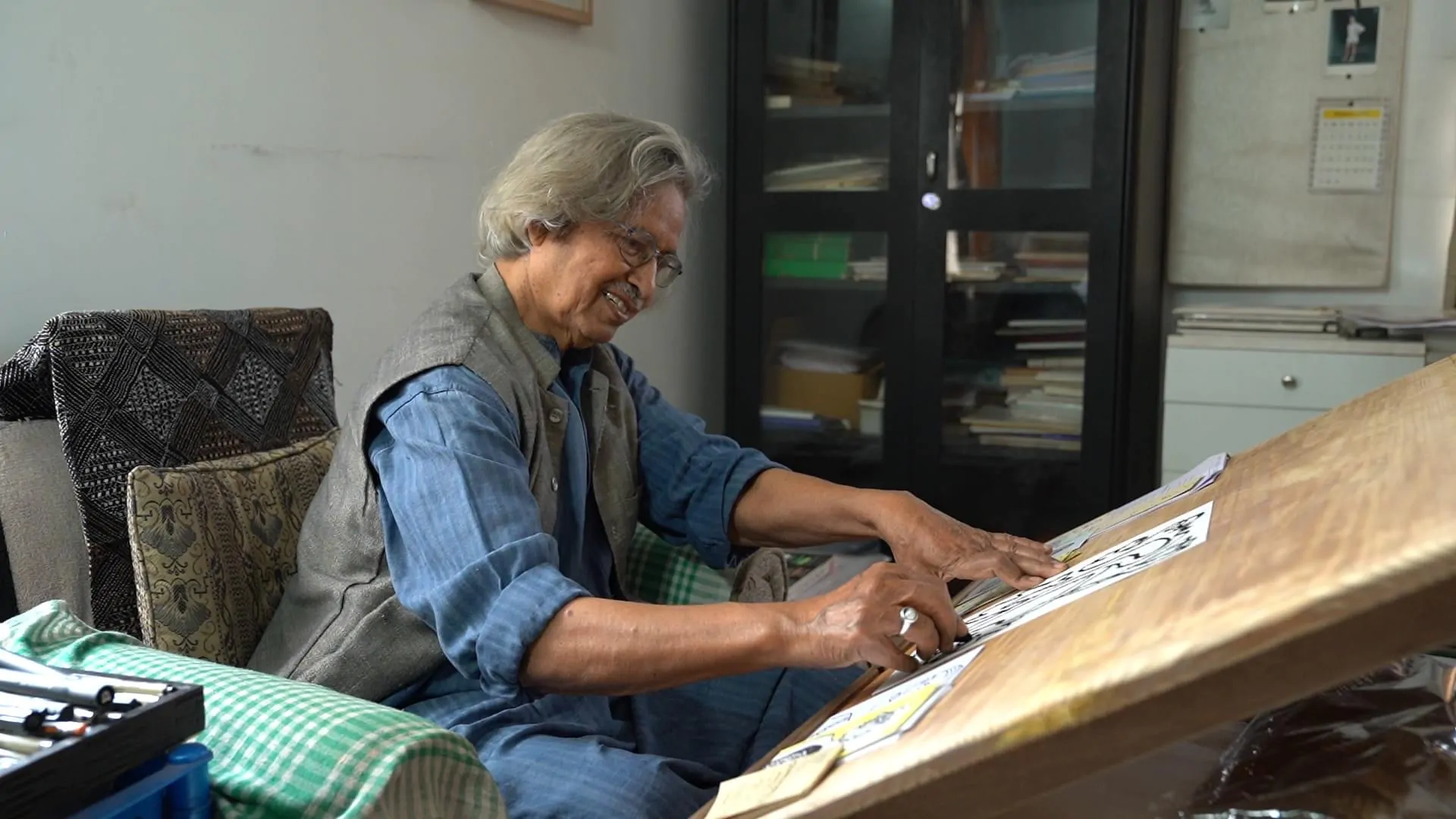
With a vast body of work executed in a variety of materials and mediums such as ink, pastels, serigraphs and painted platters, Jogen Chowdhury is a widely collected artist in India and abroad.




